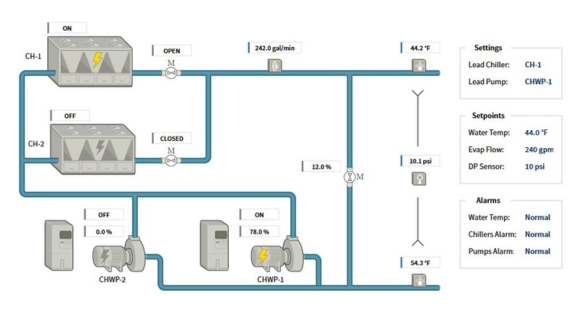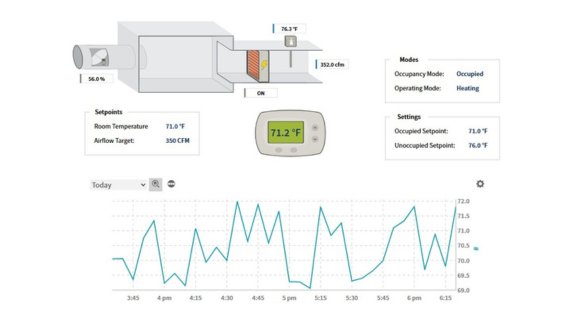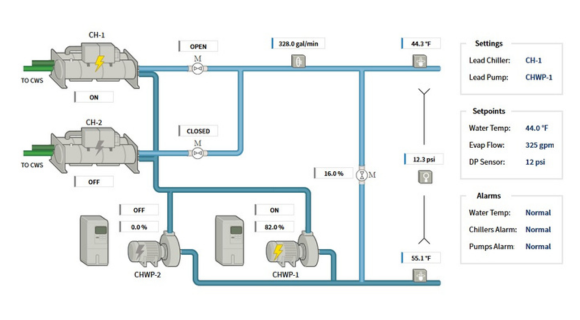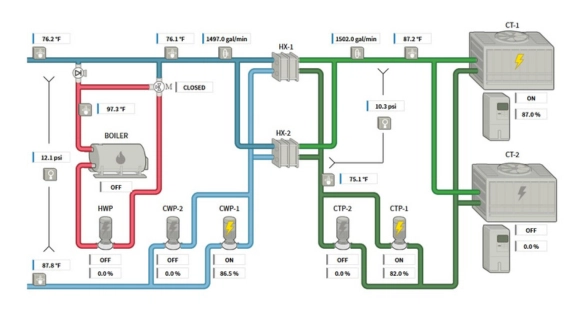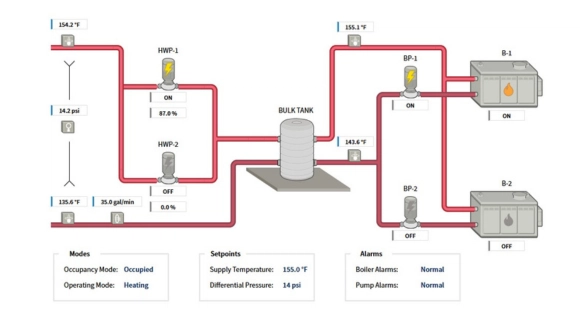Application
A Multi-Zone Air Handling Unit (AHU) serves multiple thermal zones within a building, allowing independent temperature control in each area. These systems are commonly found in offices, hospitals, schools, and airports, where occupancy varies throughout the day.
When the HVAC system lacks an effective user interface, operators often face difficulties in adjusting setpoints, identifying issues, or maintaining optimal performance. This can result in discomfort, energy waste, and unnecessary wear on equipment.
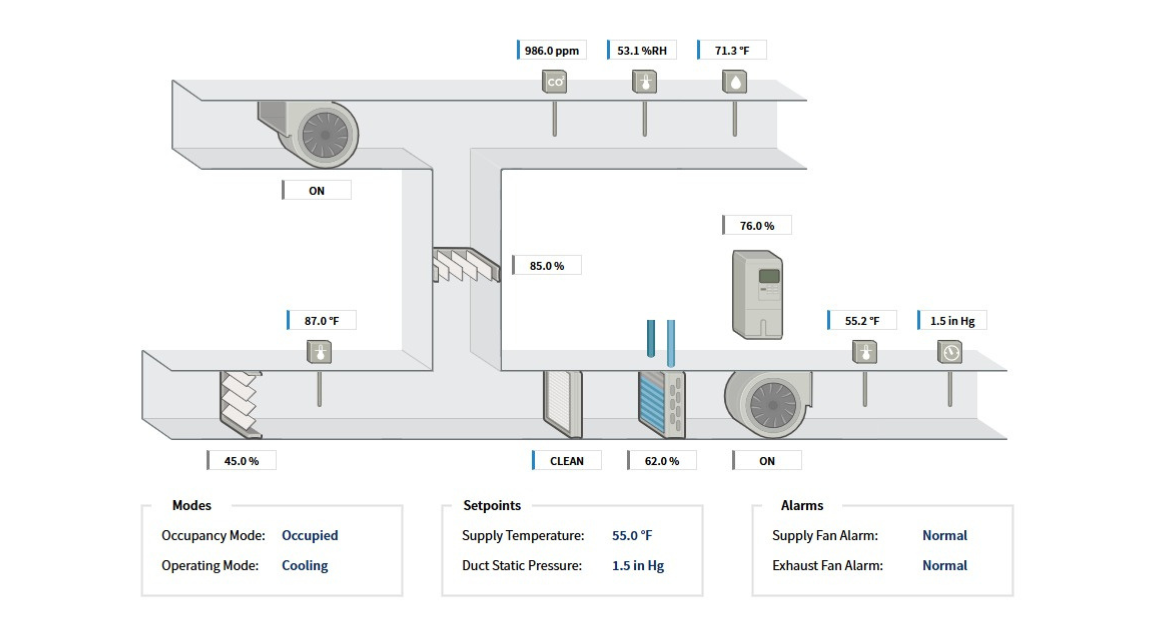
User Interface Benefits
Adjust settings and schedules remotely: Save energy by aligning system operation with occupancy and reducing runtime.
Manage unit operation in real time: Maintain consistent comfort across zones and reduce temperature complaints.
Supervise component faults and failures: Prevent unexpected breakdowns and minimize disruptions to building operations.
Takeaways
A well-designed user interface is critical for managing commercial HVAC systems like multi-zone AHUs. Remote access helps optimize energy use, while real-time monitoring ensures occupant comfort and system responsiveness.
Want to Manage Your HVAC System More Efficienlty ?
We design BMS interfaces that give facility operators full control of their HVAC systems.


